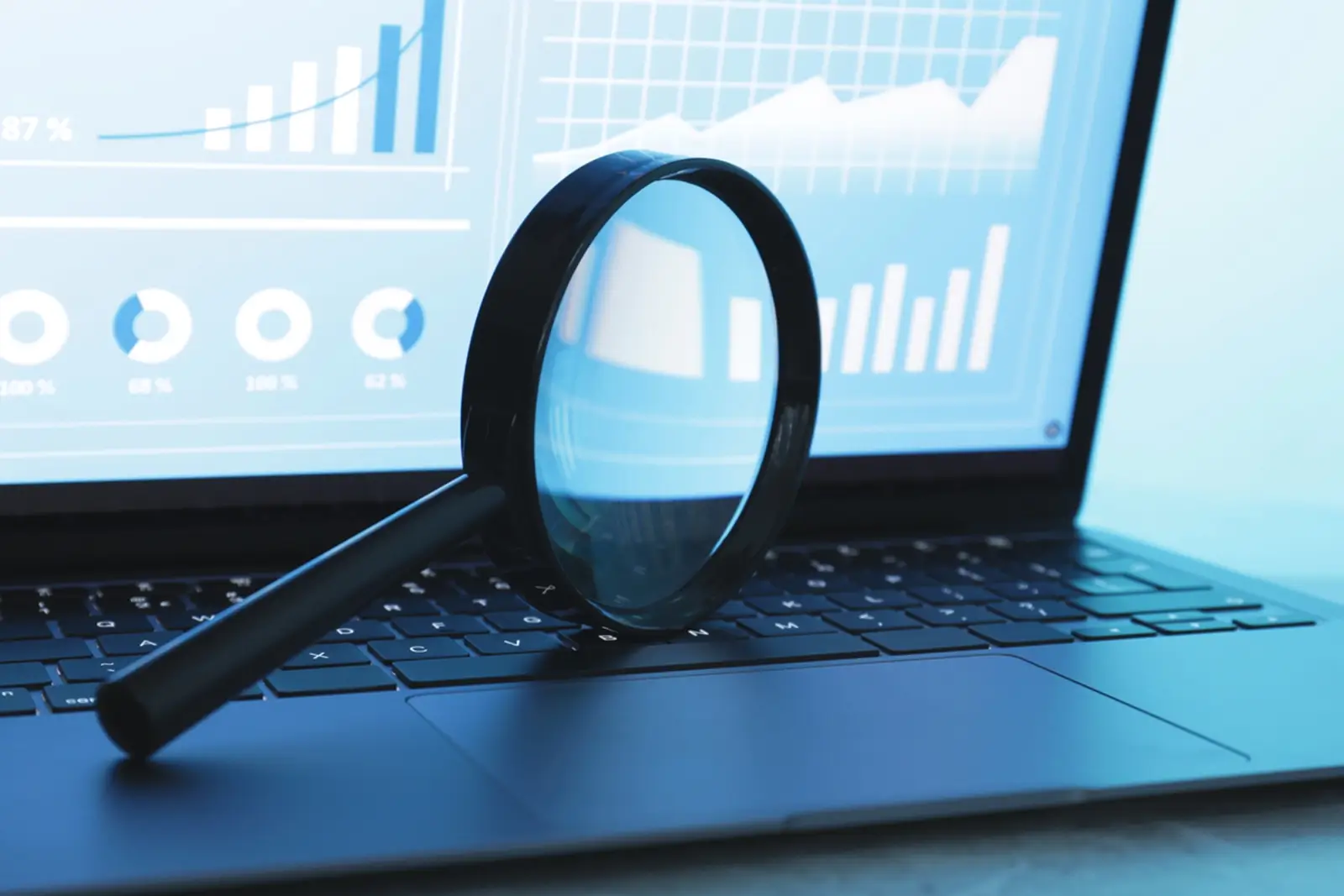How to get started with Microsoft Power BI

Answers to the most frequently asked questions about the introduction of Power BI for your own data analysis.
You will soon be analyzing and visualizing your data with Power BI. That's good news! Because Power BI provides you with pragmatic, reliable and extremely comprehensive support for your daily work with data. It's clear that you now have a lot of questions. Let's just jump in.
Perhaps you have made a conscious decision to use Microsoft Power BI because you have long been convinced of its many benefits. Or the company you work for is now introducing the BI platform, so you still need to familiarize yourself with the subject matter. Whatever point you are at, one thing is clear: you have questions. Because it's not just working with data that presents you with small and large challenges every day; dealing with new technologies and tools also keeps you on your toes.
In our experience, new users often have very similar questions, especially at the beginning of the introduction of Power BI. In addition to the natural uncertainties that come with learning a new methodology or a new tool, organizational frameworks also change in order to enable data-driven work across the company. Long-established routines are being abandoned in favour of an agile and digitalized way of working. This can be exhausting or sometimes even confusing, but also exciting and absolutely worthwhile. So let's clarify the following questions.
What is Microsoft Power BI?
Microsoft Power BI is a business intelligence platform that helps companies make data-driven decisions and visualize their data. Power BI offers a variety of tools and features that enable users to integrate and analyze data from multiple sources and present it in compelling reports and dashboards. The introduction and use of Power BI can help to increase the efficiency of business processes in addition to improving decision-making.
Why is Power BI so popular?
Although there are a variety of business intelligence tools on the market, Power BI is characterized by its ease of use and integration capabilities, making it an excellent choice for companies of all sizes and industries. Power BI is also very quick to implement and very powerful. Provided your required data is fully integrated, you have a wide range of functions and tools at your disposal for your data analysis. These include, for example, creating calculations and adding slicers and filters. They allow you to delve deeper into your data, gain valuable insights and present them in appealing reports and dashboards.

Nevertheless, it makes sense to find out about the various options and, if necessary, seek advice from BI experts in order to select and ultimately introduce the right tool for the company with its individual requirements.
What exactly are the benefits of data analysis with Power BI?
To find out what Power BI can help you with, you should take a step back. Ask or remind yourself what you want to achieve by using business intelligence. You also need to find out what data you need to achieve your goals. Before actually implementing your plans, identifying and defining clear goals and requirements will help you to introduce and use Power BI in a targeted and focused way.
How do I integrate data into Power BI?
An important feature of Power BI is its integration capability, which is why it can be implemented quickly. The platform offers support for a variety of data sources, from Excel files to cloud services such as Google Analytics and Salesforce. This allows you to collect all data in one central location and analyze it later. The data is loaded directly into Power BI using connectors and can then be transformed, modelled and visualized via a visual user interface. For prototypes and rapid success, we recommend using Power BI in all three areas. This is because Power BI is first and foremost a business intelligence tool that enables users to display and analyze data visually.
If the data - and especially the relationships between the data - become too complex, we recommend moving the ETL route to a more suitable system environment. A modern data platform such as Azure Synpase is suitable here, for example.
How do I use data in Power BI?
Basically, you can divide Power BI into two central levels: Power BI Desktop and Power BI Service. Power BI Desktop is a local application for individual users to integrate data and create reports and then upload these reports to the Power BI Service WebApp. Power BI Service is a web application and serves as a collaborative platform for the consumption of data. It enables the creation of workspaces to manage and share reports, data and integrations.
Note: Both your analysis and the visualization of your data depend on a solid and complete database. Acquiring, collecting and transforming the data as well as connecting it to Power BI can be complex processes that may still need to be administered and possibly established within a tech stack. But not only is it worth investing time and effort in integrating the data so that it is available in one central location, it is essential.
Are there restrictions on data usage in Power BI?
Power BI limits the number of rows that can be processed in a single data model. If you work with large amounts of data, this can lead to performance problems. The options for linking tables are also limited, which makes it difficult to create complex relationships. Unstructured data, such as text or images, can also only be processed to a limited extent, as can complex calculations and transformations on the data.
When does a pre-calculation in a data warehouse make sense?
If you work with BI tools, you should regularly remind yourself of the "5 Ps": Propper Preparation Prevents Poor Performance. There are very typical problems that can quickly lead to performance issues in Power BI:
- Size and complexity of the data model: The larger and more complex the data model, the longer it takes to load and analyze the data.
- Data source performance: The speed at which the data is loaded from the data source affects the speed of report generation.
- Computing intensity of the reports: Reports with many calculations and visualizations have longer loading times.
- Performance of the computer: The performance of the computer on which Power BI is running influences the speed of report generation.
The poor performance (speed of the reports) in combination with the limitations leads to a lower acceptance of Power BI, which is then used less or not at all. This is a general problem with BI systems, as they are only designed to visualize data, not to transform it. For extensive and complex data, it therefore makes more than sense to use a data warehouse.
Is the introduction of Power BI difficult?
One of the most important features of Power BI is its user-friendliness. The platform is intuitive to use and offers ready-made templates and so-called data packages that allow you to get started quickly and learn easily. This makes it particularly attractive for companies that want to improve their data-driven decisions without being held back by the learning curve of new tools.
How much time do I need to gain initial insights?
It generally takes just a few hours to familiarize yourself with Power BI. Allow two days to familiarize yourself with the basic functions of the tool and create your first meaningful analyses and visualizations. If you regularly and deeply engage with both the possibilities of the BI platform and the potential of your great data, you will go from small to big insights in the long term and be able to make your first data-driven decisions within a few weeks.
How do I inspire colleagues to use Power BI?
Ensure that all relevant stakeholders have access to your reports and dashboards. This reliably involves them in insight-driven data work and automatically enables them to make data-driven decisions. Power BI offers a variety of ways to share the reports and dashboards you create with others. Users can integrate them directly into their own website or into applications such as Slack or export them by email or as a PDF. In order to exploit the full potential of Power BI, all employees should also be trained in its optimal use and regularly informed about new features of the tool. For the latter, for example, the establishment of regular community-of-practice meetings where employees can educate each other is a good idea.

How do I keep my Power BI reports up to date?
Regular reviews and adjustments to your BI strategy ensure that it always meets your objectives. After all, needs can change and so can the requirements for analyzing your data. The modification of your BI strategy can depend on numerous internal and external factors, such as business goals and market changes, technological infrastructure, skills management or extended data-driven insights. Even after the introduction of Power BI, regular shoulder checks and planning intervals ensure high-quality reporting.







